
Kenya offers top 10 historical sites, showcasing its cultural heritage, colonial past, and ancient civilizations for eager tourists.
1. Fort Jesus (Mombasa):
2. Lamu Old Town (Lamu Island):
3. Gede Ruins (Malindi):
4. Karen Blixen Museum (Nairobi):
5. Maasai Mara National Reserve:
6. Hell’s Gate National Park:
7. Kisumu Museum:
8. Kitale Museum:
9. Thimlich Ohinga Archaeological Site:
10. Kariandusi Prehistoric Site:
1. Fort Jesus (Mombasa)Kenya:
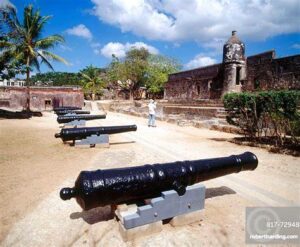
Fort Jesus, located in Mombasa, Kenya, is a historic fortress that stands as a symbol of the region’s rich and diverse past.
Built by the Portuguese in the 16th century, this imposing structure served as a strategic military outpost and played a significant role in the history of East Africa.
The fort’s distinctive architecture, characterized by its massive stone walls and bastions, reflects a blend of European, Arab, and Swahili influences.
For tourists visiting Fort Jesus, there is a wealth of history and culture to explore.
The fort has been designated as a UNESCO World Heritage Site, offering visitors a chance to step back in time and learn about the region’s colonial past.
Inside the fort, visitors can wander through the various chambers, courtyards, and dungeons, gaining insights into the daily life of the soldiers and inhabitants who once occupied the fortress.
One of the highlights of a visit to Fort Jesus is the Museum located within the fort.
It showcases a collection of artifacts, exhibits, and displays that provide a deeper understanding of the fort’s history and significance.
Visitors can also enjoy panoramic views of Mombasa Old Town and the Indian Ocean from the fort’s ramparts.
This offers a stunning backdrop for photos and a chance to appreciate the beauty of the coastal landscape.
Overall, a visit to Fort Jesus is a must for tourists seeking to immerse themselves in the fascinating historical sites and architectural heritage of Kenya.
The fort’s strategic location, historical significance, and cultural richness make it a captivating destination for travelers exploring the coastal region of Kenya.
2. Lamu Old Town (Lamu Island) Kenya:

Lamu Old Town, located on Lamu Island in Kenya, is a captivating destination that offers tourists a glimpse into the rich historical sites and culture of the Swahili coast.
Designated as a UNESCO World Heritage Site, Lamu Old Town is one of the best-preserved Swahili settlements in East Africa, dating back to the 14th century.
The town’s narrow streets, intricately carved wooden doors, and traditional Swahili architecture transport visitors back in time to a bygone era.
Tourists exploring Lamu Old Town can wander through the labyrinthine alleyways, lined with ancient stone buildings and bustling markets.
The town’s historic mosques, such as the iconic Lamu Fort and Riyadha Mosque, provide insights into the region’s Islamic heritage and architectural craftsmanship.
Visitors can also admire the ornate Swahili houses adorned with intricately carved balconies and colorful tapestries, reflecting the town’s cultural diversity and artistic flair.
One of the highlights of a visit to Lamu Old Town is experiencing the local way of life, characterized by a laid-back pace, traditional dhow sailing, and vibrant Swahili cuisine.
Tourists can sample delicious seafood dishes, shop for handmade crafts at the local markets, and engage with the friendly residents who embody the spirit of Swahili hospitality.
For those seeking a unique cultural experience in Kenya, Lamu Old Town offers a blend of history, architecture, and tradition that is sure to leave a lasting impression on visitors.
Whether strolling along the waterfront, exploring the historic sites, or simply soaking in the town’s timeless charm, Lamu Old Town is a must-visit destination for tourists looking to immerse themselves in the enchanting world of Swahili culture.
3. Gede Ruins (Malindi)Kenya:
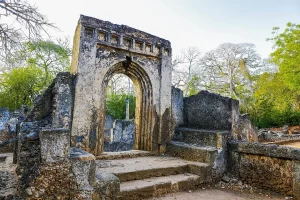
Gede Ruins, located near Malindi in Kenya, is one of the fascinating archaeological and historical sites that offer tourists a glimpse into the ancient Swahili civilization that once thrived in the region.
Dating back to the 12th century, Gede Ruins are the remnants of a prosperous Swahili town that mysteriously disappeared centuries ago.
The site is shrouded in history and intrigue, with its crumbling walls, stone houses, and intricate carvings providing a window into the past.
With this in mind, tourists visiting Gede Ruins can explore the well-preserved ruins, wander through the ancient streets, and marvel at the architectural ingenuity of the Swahili people.
The site’s central mosque, palace ruins, and intricate water cisterns offer insights into the town’s religious, social, and economic structures.
Visitors can also learn about the daily life of the inhabitants of Gede, their trading practices, and cultural traditions through the informative displays and guided tours available at the site.
The lush surroundings of Gede Ruins, with its tropical vegetation and birdlife, create a serene and picturesque setting for tourists to immerse themselves in the history and beauty of the site.
For history buffs, archaeology enthusiasts, and curious travelers alike, Gede Ruins offers a unique opportunity to step back in time and uncover the mysteries of this ancient Swahili settlement.
A visit to Gede Ruins is a journey through Kenya’s rich cultural heritage and a chance to connect with the past in a truly unforgettable way.
4. Karen Blixen Museum (Nairobi) Kenya:
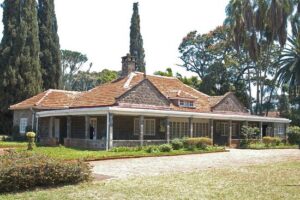
The Karen Blixen Museum, located in Nairobi, Kenya, is one of the best historical sites and must-visit destinations for tourists seeking to delve into the life and legacy of the renowned Danish author Karen Blixen, best known for her memoir “Out of Africa.”
Housed in the former home of Karen Blixen, also known by her pen name Isak Dinesen, the museum offers a glimpse into the world of this iconic writer and her experiences in colonial Kenya.
Visitors to the Karen Blixen Museum can explore the beautifully preserved rooms, furnished with period pieces and personal belongings of the author, providing a sense of stepping back in time to the early 20th century.
In general, the museum’s lush gardens, sprawling across the estate, offer a tranquil setting for tourists to wander and reflect on Blixen’s literary works and her connection to the African landscape.
Guided tours of the museum provide insights into Blixen’s life, her relationships with the local community, and the inspiration behind her writing. Additionally, visitors can learn about the history of the house, its restoration, and the cultural significance of preserving Blixen’s legacy in Kenya.
For literature enthusiasts, history buffs, and fans of “Out of Africa,” the Karen Blixen Museum offers a unique opportunity to immerse oneself in the world of this celebrated author and gain a deeper understanding of her impact on Kenyan culture and literature.
A visit to the Karen Blixen Museum is a journey through time and a celebration of the enduring spirit of storytelling and connection to the land.
5. Maasai Mara National Reserve Kenya:
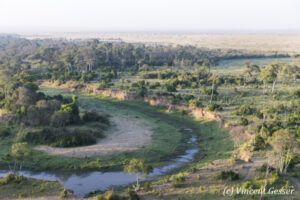
Maasai Mara National Reserve, located in Kenya, is one of the historical sites and a must-visit destination for tourists seeking an unforgettable safari experience.
Spanning over 1,500 square kilometers, this iconic reserve is renowned for its breathtaking landscapes, diverse wildlife, and, furthermore, its rich cultural heritage.
One of the most notable attractions of Maasai Mara is the annual Great Migration, where millions of wildebeest, zebras, and other herbivores cross the Mara River in search of greener pastures.
Witnessing this natural spectacle is a once-in-a-lifetime opportunity that draws visitors from around the world.
In addition to the Great Migration, Maasai Mara is home to the “Big Five” – lions, elephants, buffaloes, leopards, and rhinos – as well as a wide variety of other wildlife species.
Visitors can embark on game drives, guided walks, or hot air balloon safaris to observe these majestic animals in their natural habitat.
In addition, for those interested in cultural experiences, Maasai Mara offers the chance to interact with the Maasai people, a semi-nomadic tribe known for their vibrant traditions and colorful attire.
Visitors can visit Maasai villages, learn about their customs, and even participate in traditional dances and ceremonies.
Accommodation options in Maasai Mara range from luxury lodges to tented camps, providing visitors with a range of choices to suit their preferences and budget.
Whether you’re a seasoned safari enthusiast or a first-time visitor, Maasai Mara National Reserve promises an unforgettable adventure filled with wildlife encounters, stunning landscapes, and cultural immersion.
6. Hell’s Gate National Park Kenya:

Located in Kenya, Hell’s Gate National Park is one of the historical sites and a must-visit destination for tourists seeking an unforgettable safari experience.
Covering an area of approximately 68 square kilometers, this park is known for its stunning landscapes, diverse wildlife, and fascinating geothermal features.
One of the main attractions of Hell’s Gate National Park is its dramatic scenery, characterized by towering cliffs, deep gorges, and rugged rock formations.
Additionally, visitors can explore the park on foot, by bicycle, or even on a guided safari tour, allowing them to immerse themselves in the natural beauty of the surroundings.
Wildlife enthusiasts will be delighted by the park’s diverse fauna, which includes a variety of bird species, as well as larger animals such as zebras, giraffes, and buffaloes.
The park is also home to a population of endangered Rothschild’s giraffes, making it a prime spot for wildlife viewing and photography.
One of the most unique features of Hell’s Gate National Park is its geothermal activity, with hot springs, geysers, and steam vents scattered throughout the park.
Visitors can take a guided tour to learn more about the geology of the area and witness these natural wonders up close.
For those seeking adventure, Hell’s Gate National Park offers opportunities for rock climbing, hiking, and camping, allowing visitors to truly immerse themselves in the rugged beauty of the landscape.
Whether you’re a nature lover, wildlife enthusiast, or thrill-seeker, Hell’s Gate National Park has something to offer for everyone.
Don’t miss the chance to explore this incredible destination on your next trip to Kenya!
7. Kisumu Museum Kenya:
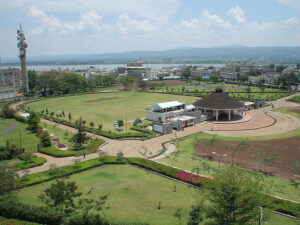
Kisumu Museum, located in Kenya, is a must-visit destination for tourists looking to immerse themselves in the rich cultural heritage of the region.
Moreover, this museum offers a fascinating glimpse into the history, traditions, and natural wonders of Kisumu and its surrounding areas.
Upon entering the museum, visitors are greeted with a diverse collection of artifacts, exhibits, and interactive displays that showcase the cultural diversity of the region.
Moreover, from ancient tools and pottery to intricate beadwork and textiles, the museum offers a comprehensive look at the cultural diversity of the region.
One of the highlights of the museum is its focus on the traditional lifestyles of the various ethnic groups that call Kisumu home.
Visitors can learn about the customs, beliefs, and practices of communities such as the Luo, Luhya, and Abasuba through informative displays and demonstrations.
In addition to its cultural exhibits, Kisumu Museum also boasts a stunning natural history section that showcases the region’s unique flora and fauna.
Visitors can marvel at taxidermy specimens of local wildlife, learn about the importance of conservation efforts in the area, and even participate in educational programs and guided tours.
For those interested in the history of Kisumu and its role in Kenya’s development, the museum offers a wealth of information on topics such as colonialism, trade, and transportation.
Interactive exhibits and multimedia presentations bring the past to life, allowing visitors to gain a deeper understanding of the forces that have shaped the region.
Overall, Kisumu Museum is a treasure trove of knowledge and inspiration for tourists seeking to explore the cultural and natural wonders of Kenya.
8. Kitale Museum Kenya:
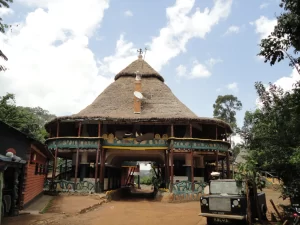
Kitale Museum, located in Kenya, is a captivating destination for tourists seeking to delve into the rich cultural and natural history of the region.
This museum offers a diverse range of exhibits and displays that showcase the traditions, artifacts, and wildlife of Kitale and its surrounding areas.
Furthermore, from traditional crafts and tools to archaeological findings and historical photographs, the museum provides a comprehensive overview of Kisumu’s past and present.
Moreover, from ancient tools and pottery to intricate beadwork and textiles, the museum offers a comprehensive look at the cultural diversity of the region.
One of the highlights of Kitale Museum is its focus on the natural history of the area.
In addition, visitors can explore exhibits featuring taxidermy specimens of local wildlife, interactive displays on conservation efforts, and informative presentations on the unique flora and fauna of Kitale.
The museum also boasts a botanical garden where visitors can stroll among indigenous plants and learn about their medicinal and cultural significance.
For those interested in the history of Kitale and its role in Kenya’s development, the museum offers a wealth of information on topics such as colonialism, agriculture, and trade.
Interactive exhibits and multimedia presentations bring the past to life, allowing visitors to gain a deeper understanding of the forces that have shaped the region.
Overall, Kitale Museum is a treasure trove of knowledge and inspiration for tourists looking to explore the cultural and natural wonders of Kenya.
Whether you’re a history enthusiast, a nature lover, or simply curious about the world around you, a visit to this museum is sure to be a rewarding and enlightening experience.
9. Thimlich Ohinga Archaeological Site Kenya:
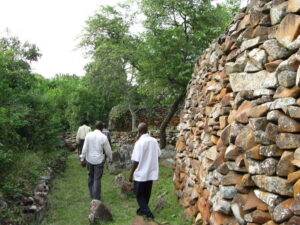
Thimlich Ohinga Archaeological Site, located in Kenya, is a hidden gem waiting to be explored by curious tourists seeking a glimpse into the ancient past of the region.
Furthermore, this unique site is a well-preserved example of a traditional dry-stone enclosure, believed to have been constructed over 500 years ago by the Luo community.
The site’s name, Thimlich Ohinga, translates to “frightening dense forest” in the Dholuo language, reflecting the mysterious and awe-inspiring nature of the site.
Visitors to Thimlich Ohinga Archaeological Site can marvel at the intricate stone walls that encircle the area, providing a glimpse into the architectural prowess of the ancient builders.
The site offers a fascinating insight into the social organization, defense strategies, and cultural practices of the Luo people during that time period.
Exploring Thimlich Ohinga allows tourists to step back in time and imagine what life was like for the inhabitants of this ancient settlement.
The site’s strategic location on a hill provides panoramic views of the surrounding landscape, adding to the sense of wonder and discovery.
Additionally, for history enthusiasts and archaeology buffs, the Thimlich Ohinga Archaeological Site offers a unique opportunity to learn about Kenya’s rich cultural heritage and the traditions of its indigenous communities.
Guided tours and informative signage provide valuable context and insights into the significance of the site, making it a must-visit destination for those interested in delving into the past.
A visit to Thimlich Ohinga promises to be a memorable and educational experience for tourists looking to uncover the mysteries of Kenya’s ancient history.
10. Kariandusi Prehistoric Site Kenya:
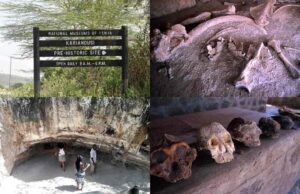
Thimlich Kariandusi Prehistoric Site, located in Kenya, is a must-visit destination for tourists seeking to explore the rich history and culture of the region.
This archaeological site holds significant importance as it provides a glimpse into the prehistoric era, offering a fascinating insight into the lives of early humans who inhabited the area thousands of years ago.
As you step foot into Thimlich Kariandusi, you will be greeted by a vast landscape dotted with ancient artifacts and remnants of early human settlements.
Moreover, the site is home to various tools, weapons, and fossils that have been meticulously preserved, allowing visitors to marvel at the ingenuity and resourcefulness of our ancestors.
One of the highlights of Thimlich Kariandusi is the Kariandusi Museum, where visitors can learn more about the history and significance of the site through interactive exhibits and displays.
The museum showcases a diverse collection of artifacts, including stone tools, pottery, and fossils, providing a comprehensive overview of the prehistoric era in Kenya.
In addition to exploring the archaeological wonders of Thimlich Kariandusi, visitors can also enjoy the natural beauty of the surrounding area.
The site is nestled amidst stunning landscapes, offering breathtaking views of the Great Rift Valley and Lake Elementaita.
Whether you are a history enthusiast, an archaeology buff, or simply a curious traveler, Thimlich Kariandusi Prehistoric Site promises an unforgettable experience.
It will transport you back in time and leave you in awe of the ancient civilizations that once thrived in this remarkable region.







